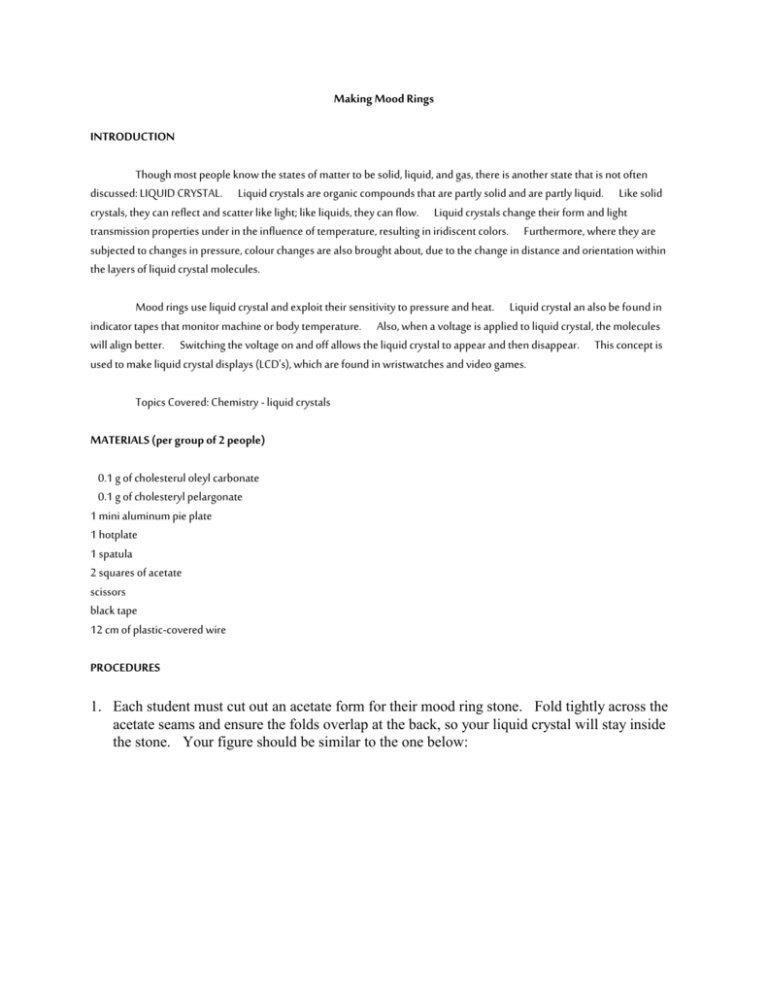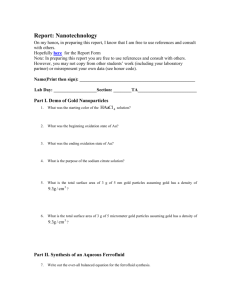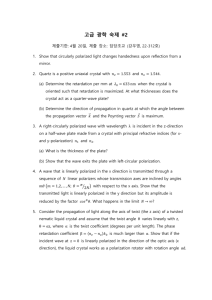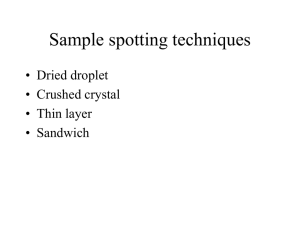Making Mood Rings INTRODUCTION Though most people know the
advertisement

Making Mood Rings INTRODUCTION Though most people know the states of matter to be solid, liquid, and gas, there is another state that is not often discussed: LIQUID CRYSTAL. Liquid crystals are organic compounds that are partly solid and are partly liquid. Like solid crystals, they can reflect and scatter like light; like liquids, they can flow. Liquid crystals change their form and light transmission properties under in the influence of temperature, resulting in iridiscent colors. Furthermore, where they are subjected to changes in pressure, colour changes are also brought about, due to the change in distance and orientation within the layers of liquid crystal molecules. Mood rings use liquid crystal and exploit their sensitivity to pressure and heat. Liquid crystal an also be found in indicator tapes that monitor machine or body temperature. Also, when a voltage is applied to liquid crystal, the molecules will align better. Switching the voltage on and off allows the liquid crystal to appear and then disappear. This concept is used to make liquid crystal displays (LCD's), which are found in wristwatches and video games. Topics Covered: Chemistry - liquid crystals MATERIALS (per group of 2 people) 0.1 g of cholesterul oleyl carbonate 0.1 g of cholesteryl pelargonate 1 mini aluminum pie plate 1 hotplate 1 spatula 2 squares of acetate scissors black tape 12 cm of plastic-covered wire PROCEDURES 1. Each student must cut out an acetate form for their mood ring stone. Fold tightly across the acetate seams and ensure the folds overlap at the back, so your liquid crystal will stay inside the stone. Your figure should be similar to the one below: 2. Put the mini pie plate onto the weighing machine and wait for calibration. Press the “tare” button. This weight that the machine reads will then be zero. Using the spatula, put 0.1 gram of cholesteryl pelargonate and 0.1 gram of cholesteryl oleyl carbonate. You may need to use the popsicle stick to remove the cholesteryl from the spatula if it sticks. Use the spatula to mix the two substances together. 3. Place the plate on the hot plate and put on low setting. Heat until a clear solution is formed. CAUTION: Do not let your solution overheat!! Turn off hot plate and remove pie plate from hotplate. 4. Using the spatula, spread a thin film of the melted mixture onto the acetate piece (the ring doesn’t work very well if there is too much liquid crystal). Fold in the edges and seal firmly with black tape. Since the liquid crystal shows up better on a black background, ensure that the black tape covers the back of the acetate. This is your mood ring stone. 5. Form a band for each of your rings by cutting an appropriate-sized piece plastic wiring. To get a thicker band, you can wind the wire twice. Attach the band to you mood ring stone with some black tape. Test out your ring by gently rubbing on the stone. 6. Clean up! Wash and dry your pie plate, popsicle stick, and spatula so they can re-used. Throw away any small scraps of material and clean off your work area. Return items to where you found them. TAKING IT A STEP FURTHER References: The idea for this project was developed from a similar lab by Dr. Rashmi V. Variations on the project: Dr. Rashmi used slide mounts to hold her liquid crystal, which works well since the slides snap into place. Also try to make other types of mood-sensitive jewellery: necklaces, bracelets, etc.







